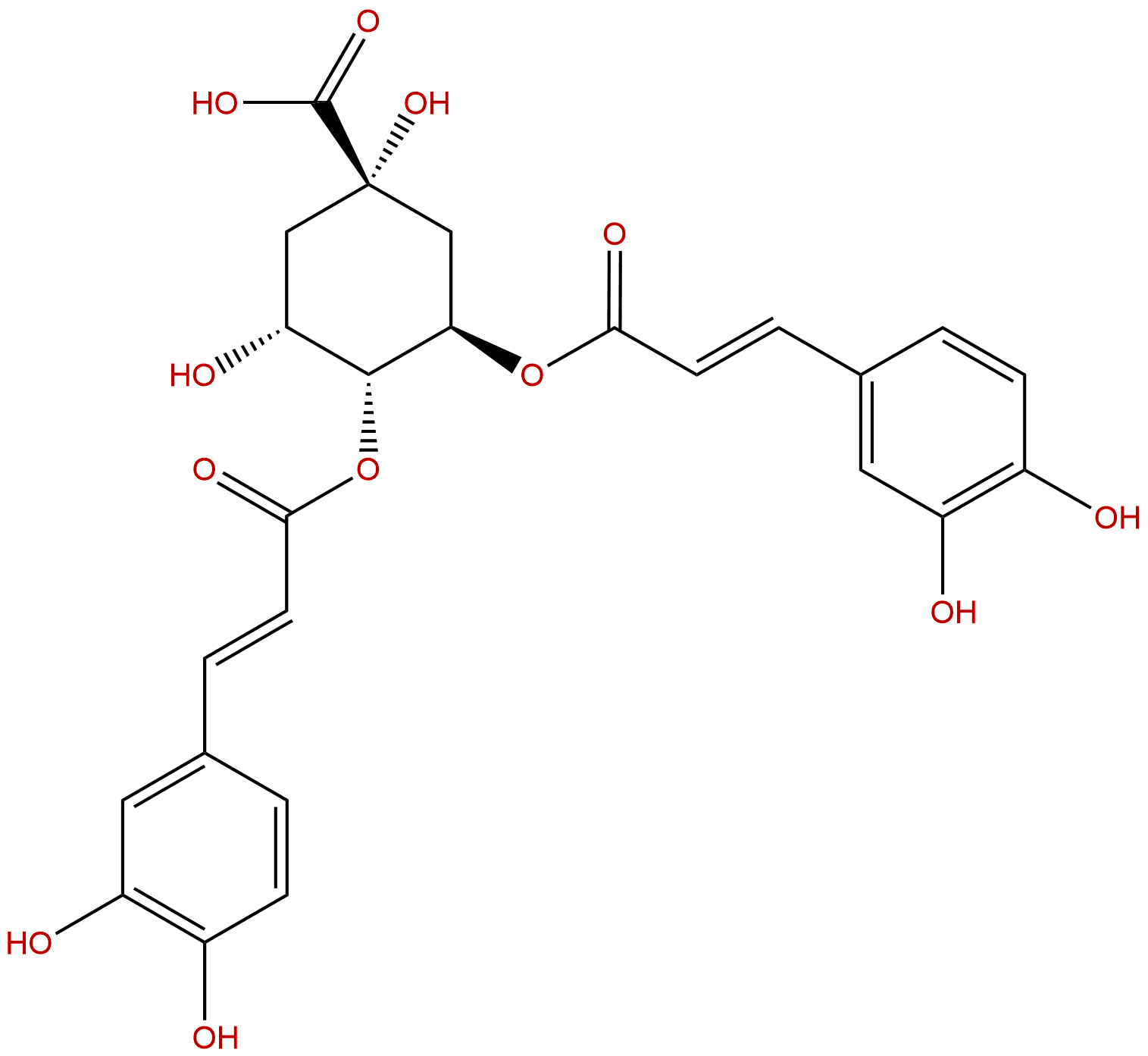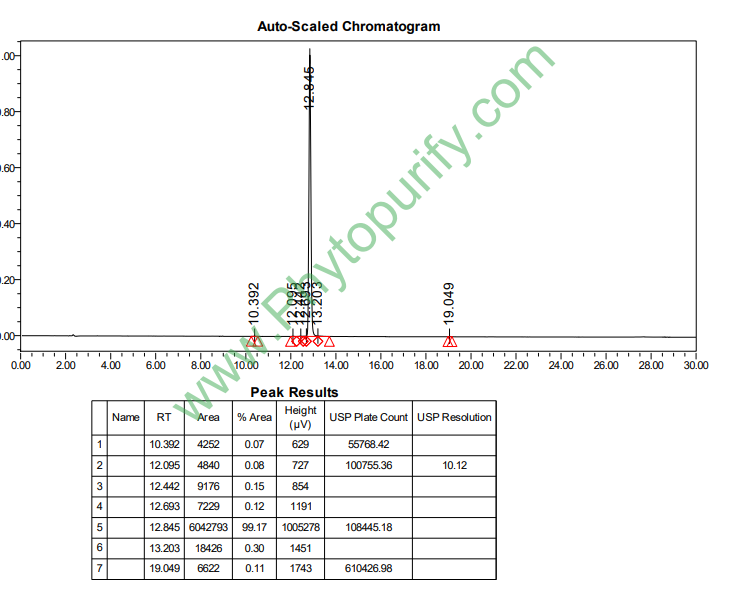
3,4-Dicaffeoylquinic acidCAS No.:14534-61-3 |
||||||||||
 |
|
|
||||||||

| Catalogue No.: | BP0055 |
| Formula: | C25H24O12 |
| Mol Weight: | 516.455 |
| Botanical Source: | Lonicera japonica Thunb. |
Product name: 3,4-Dicaffeoylquinic acid
Synonym name: Isochlorogenic acid B
Catalogue No.: BP0055
Cas No.: 14534-61-3
Formula: C25H24O12
Mol Weight: 516.455
Botanical Source: Lonicera japonica Thunb.
Physical Description:
Type of Compound: Phenylpropanoids
Purity: 95%~99%
Analysis Method: HPLC-DAD or/and HPLC-ELSD
Identification Method: Mass, NMR
Packing: Brown vial or HDPE plastic bottle
Storage: Store in a well closed container, protected from air and light. Put into refrigerate or freeze for long term storage.
Whenever possible, you should prepare and use solutions on the same day. However, if you need to make up stock solutions in advance, we recommend that you store the solution as aliquots in tightly sealed vials at -20℃. Generally, these will be useable for up to two weeks.
The product could be supplied from milligrams to grams
Inquire for bulk scale.
Description:
Isochlorogenic acid B has antioxidant activity, it is a potential PDE-5 inhibitor.
References:
J Biomol Struct Dyn. 2010 Apr;27(5):627-40.
Virtual screening and drug design for PDE-5 receptor from traditional Chinese medicine database.
From docking analyses, Isochlorogenic acid B was identified as the most potential inhibitory compound. De novo evolution designed 47 derivatives. Of the 47 derivatives, seven were able to map into the pharmacophore model, and these seven compounds were suggested to be the most promising leads for inhibiting PDE-5. An analysis of the hydrogen bond interactions formed between the docked ligands and PDE-5 identified ASN662, SER663 and GLN817 as the most frequently interacting residues. A total of eight novel leading compounds were identified to have favorable interaction with PDE-5. These compounds all had hydrogen bond interactions with three key residues that could be further investigated for understanding of PDE-5 and ligands interaction.
PLoS One. 2014 Sep 2;9(9):e106254.
The activity-integrated method for quality assessment of reduning injection by on-line DPPH-CE-DAD.
A sensitive on-line DPPH-CE-DAD method was developed and validated for both screening and determining the concentration of seven antioxidants of Reduning injection. The pH and concentrations of buffer solution, SDS, β-CD and organic modifier were studied for the detection of DPPH and seven antioxidants. By on-line mixing DPPH and sample solution, a DPPH-CE method for testing the antioxidant activity of the complex matrix was successfully established and used to screen the antioxidant components of Reduning injection. Then, antioxidant components including caffeic acid, isochlorogenic acid A, Isochlorogenic acid B, isochlorogenic acid C, chlorogenic acid, neochlorogenic acid and cryptochlorogenic acid were quantified by the newly established CE-DAD method.
HPLC of 3,4-Dicaffeoylquinic acid
